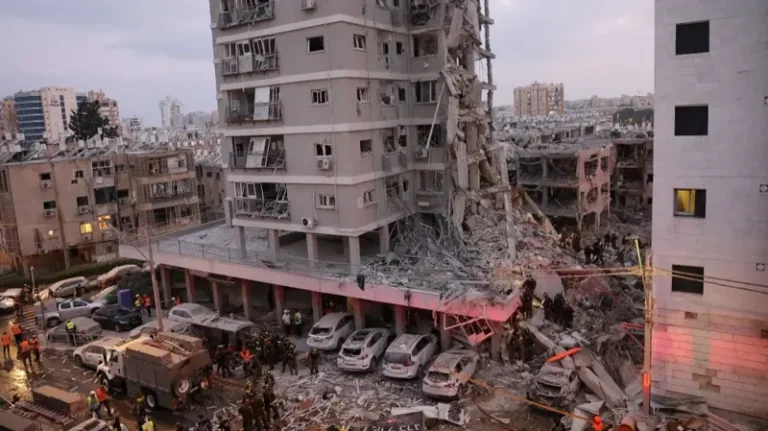A recent report reveals that an Iranian missile attack caused severe damage to five Israeli military sites. The Israeli government, however, kept this information hidden. A team of researchers from Oregon State University in the United States uncovered the details using satellite radar data. Their findings were published in a major international news outlet.
According to the analysis, Iran launched six precision missiles targeting key military and strategic locations in northern, central, and southern Israel. These included a major airbase, an intelligence facility, and several weapons depots. The missile strikes resulted in heavy destruction to those sites.
The report suggests that the Israeli administration has not shared the full extent of the damage with the public. Researchers claim that local and international media are being restricted from reporting the real impact. Authorities in Tel Aviv have reportedly increased pressure on news outlets to limit the flow of information.
Experts involved in the satellite review specialize in analyzing war-zone destruction from aerial bombings. Their analysis shows that despite Israel’s advanced missile defense systems, nearly 16% of Iranian missiles hit their targets inside Israeli territory. This figure includes areas believed to be well-defended under a joint US-Israel air defense program.
The satellite data offers a clearer picture of the actual losses faced by Israel during the recent 12-day conflict with Iran. Among the most critical findings are the successful strikes on five military installations. These were previously not reported in official Israeli statements. The report also highlights that Iran had struck 36 additional strategic locations in earlier attacks, many of which remain unconfirmed by Israeli sources.
In the same wave of missile attacks, civilian areas were also hit. As a result, about 15,000 Israeli residents lost their homes. The airstrikes damaged large parts of several neighborhoods, turning once-busy streets into rubble. At least 24 Israeli citizens were killed during these attacks.
The lack of clear communication from Israeli officials has created confusion among the public. Many are unaware of the full scale and accuracy of the Iranian strikes. Experts say this raises questions about transparency during wartime and the public’s right to know.
The satellite imagery was cross-checked and confirmed by multiple analysts familiar with conflict damage assessment. They found patterns of blast damage, heat signatures, and debris consistent with direct missile impacts. One expert said the accuracy of Iran’s strikes was higher than expected.
These new revelations show a growing challenge for Israel’s defense system. The findings also raise concerns about future missile threats, especially if more attacks target sensitive locations.
Although Israel has not officially commented on the satellite-based findings, global analysts believe the country is trying to manage the narrative. With rising tensions in the region, both governments are under pressure to control public reaction and maintain strategic advantage.
Meanwhile, humanitarian groups have reported growing needs among displaced Israeli civilians. Thousands are seeking temporary shelters, and basic services remain disrupted in affected areas.
The Iranian missile attack and the secrecy around its effects have added new layers of complexity to the already tense Middle East conflict. As more independent data becomes available, international observers are urging all parties to provide clear and truthful updates to the public.







